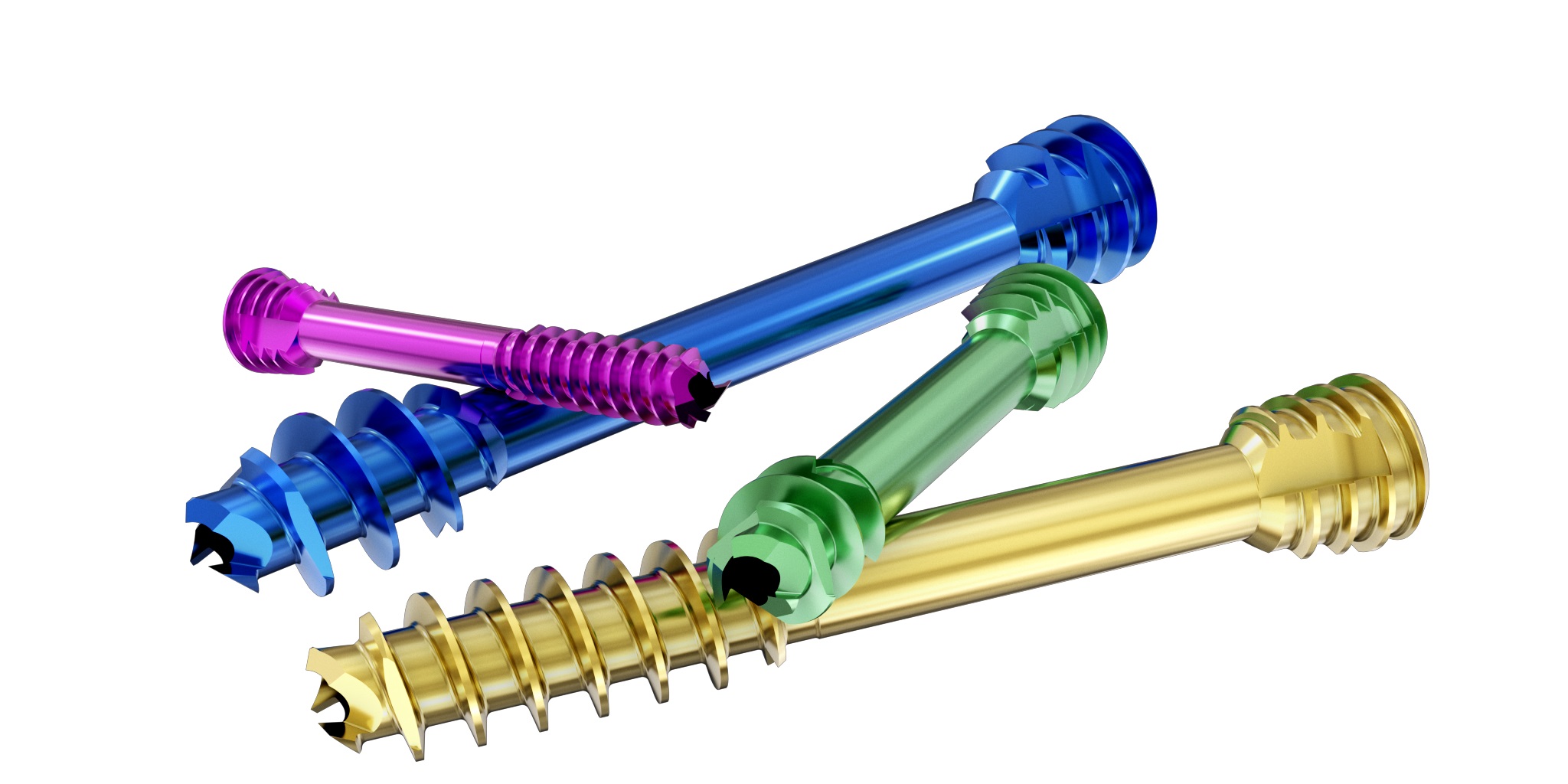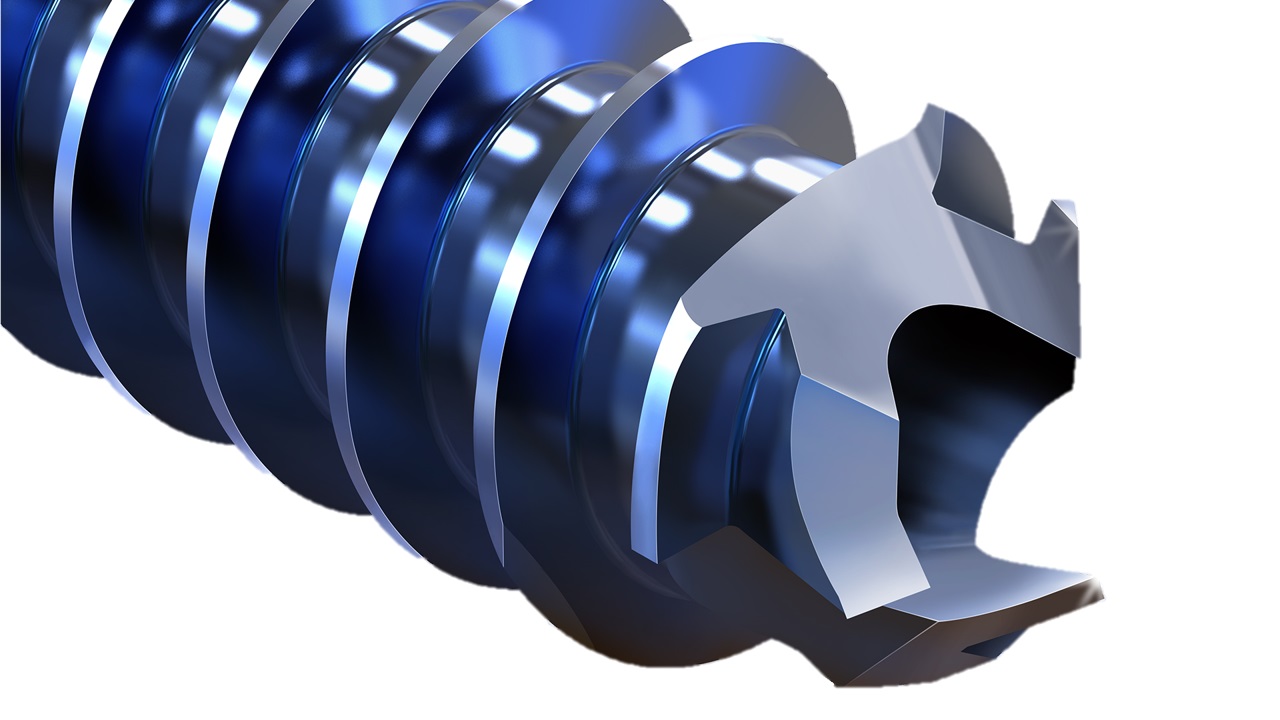
Partially Threaded Cannulated Compression Headless Screws
Juan B. Gerstner Garcés, Leslie Grujic, Christina A. Kabbash, Stefan Rammelt, Andrew K. Sands, Michael P. Swords, Ewe J. Yeap
Approved by the AO Technical Commission in 2019 for foot and ankle indications, Cannulated Compression Headless Screws are available in a variety of designs and in diameters ranging from 2.0 mm to 7.5 mm. Depending on the concept how compression between two fragments is achieved and how well the insertion of the screw can be performed depending on the individual situation, the screws provide a certain amount of compression between those two fragments. Even so the screw insertion seems to be relatively easy, it is challenging to reliably provide the intended compression between the two fragments when the K-Wire guiding the screw insertion is the only element keeping the reduction during insertion.
The Cannulated Headless Screw (Fully Threaded) System was subsequently developed as a line extension to the Cannulated Compression Headless Screw system, focusing on hand and wrist procedures, and was approved in 2025.
Innovative design features
The new Partially Threaded Cannulated Compression Headless Screws have a compound cutting edge on the tip for easier insertion designed to reduce insertion force for cutting the thread into the bone. The thread on the shaft of the screw comes in two different lengths. A differential thread pitch between the tail and head of the screw generates compression. The wider distal threads advance into the far fragment faster while the proximal threads gradually enable the two fragments to compress. The optimal compression is provided when the screw is fully seated at or below the bone surface.
Cutting efficiency testing
The cutting efficiency of the new screws was tested to measure the axial load needed for the screw to cut and tap into simulated bone. The tests have shown that the axial load needed to insert the new Partially Threaded Cannulated Compression Headless Screws into a foam block simulant is lower than that of other similar devices. This is an important advantage regarding the insertion of the screw in two ways. In the cortex of the first fragment the improved cutting efficiency allows easier insertion and advancement of the screw. When the screw reaches the second fragment the improved cutting efficiency reduces the distraction of the far fragment, retaining initial reduction.
Hazards and labeling
Due to varying countries’ legal and regulatory approval requirements, consult the appropriate local product labeling for approved intended use of the products described on this website. All devices on this website are approved by the AO Technical Commission. For logistical reasons, these devices may not be available in all countries worldwide at the date of publication.
Legal restrictions
This work was produced by AO Foundation, Switzerland. All rights reserved by AO Foundation. This publication, including all parts thereof, is legally protected by copyright.
Any use, exploitation or commercialization outside the narrow limits set forth by copyright legislation and the restrictions on use laid out below, without the publisher‘s consent, is illegal and liable to prosecution. This applies in particular to photostat reproduction, copying, scanning or duplication of any kind, translation, preparation of microfilms, electronic data processing, and storage such as making this publication available on Intranet or Internet.
Some of the products, names, instruments, treatments, logos, designs, etc referred to in this publication are also protected by patents, trademarks or by other intellectual property protection laws (eg, “AO” and the AO logo are subject to trademark applications/registrations) even though specific reference to this fact is not always made in the text. Therefore, the appearance of a name, instrument, etc without designation as proprietary is not to be construed as a representation by the publisher that it is in the public domain.
Restrictions on use: The rightful owner of an authorized copy of this work may use it for educational and research purposes only. Single images or illustrations may be copied for research or educational purposes only. The images or illustrations may not be altered in any way and need to carry the following statement of origin “Copyright by AO Foundation, Switzerland”.
Check www.aofoundation.org/disclaimer for more information.
If you have any comments or questions on the articles or the new devices, please do not hesitate to contact us.
“approved by AO Technical Commission” and “approved by AO”
The brands and labels “approved by AO Technical Commission” and “approved by AO”, particularly "AO" and the AO logo, are AO Foundation's intellectual property and subject to trademark applications and registrations, respectively. The use of these brands and labels is regulated by licensing agreements between AO Foundation and the producers of innovation products obliged to use such labels to declare the products as AO Technical Commission or AO Foundation approved solutions. Any unauthorized or inadequate use of these trademarks may be subject to legal action.
AO ITC Innovations Magazine
Find all issues of the AO ITC Innovations Magazine for download here.
Innovation Awards
Recognizing outstanding achievements in development and fostering excellence in surgical innovation.






